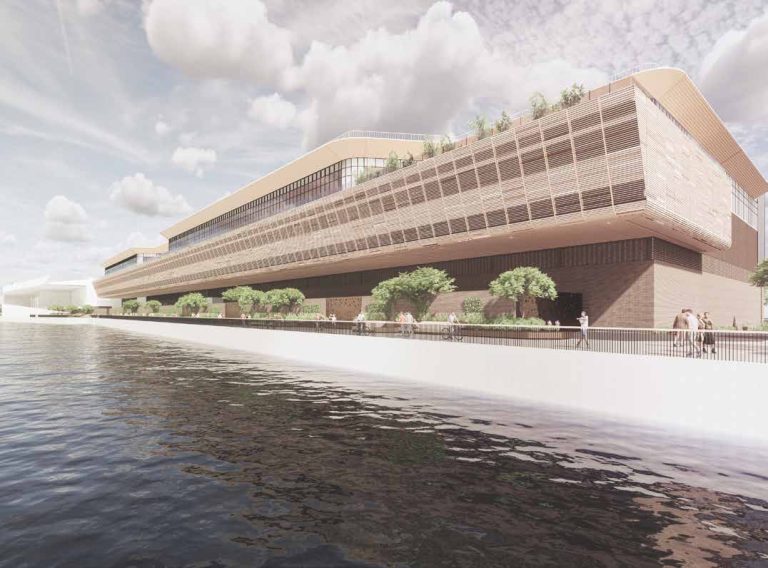Clean Planet Energy today announced a new joint venture with private equity firm Crossroads Real Estate to fund Clean Planet Energy’s flagship ecoPlant currently under construction in Teesside, North East England. This will be the first of 10 new ecoPlants that Crossroads Real Estate and Clean Planet Energy are jointly seeking to build and operate across the UK. The new joint venture could see over £400m of new UK investment deployed for the future construction of these facilities to tackle the plastic waste crisis. Potential sites have already been identified in Lincolnshire, Gloucestershire, Lancashire and South Wales , with further locations and announcements to be made in the months ahead. Clean Planet Energy’s ecoPlant is a green, advanced recycling facility intended to process non-recyclable and hard-to-recycle waste plastics that would otherwise be sent to landfill. Each ecoPlant is designed to accept 20,000 tonnes of plastics each year and to convert this waste into (a) ultra-low sulphur fuels to replace fossil fuels in the transport and heavy-machinery sectors, and (b) petrochemical feedstocks, including naphtha, which can be used to make new plastic products without the need to use fossil-based feedstocks. Clean Planet Energy’s ultra-low-sulphur diesel can reduce greenhouse gas (GHG) emissions by 75% compared to the use of traditional diesel, while the joint venture could also lead to over 200,000 tonnes of hard-to-recycle waste plastics being repurposed for use in the circular supply chain each year. The news comes as COP27 is currently underway and where world leaders are seeking solutions to reduce global GHG emissions and plastic pollution. Data from 2021 shows that the UK still generates over 2 million tonnes of plastic waste each year, with well over 60% of this not suitable for recycling. In November 2022, the UK government’s Environment, Food and Rural Affairs (EFRA) Committee published a report focusing on accelerating the reduction of plastic waste, with advanced recycling identified as a key policy recommendation. By developing new ecoPlants throughout the UK, Clean Planet Energy and Crossroads Real Estate are opening a route for traditionally non-recyclable plastic waste to be repurposed into sustainable and circular-economy products; thereby cutting plastic pollution, reducing the amount of waste entering UK landfill, and also lowering greenhouse gas emissions when the waste is converted into ultra-low-sulphur diesel and used as a low-carbon fuel replacement. David Gillerman, Founding Partner and CEO of Crossroads Real Estate said, “At Crossroads, we are committed to green opportunities and impact investing as demonstrated already through our sustainable hotels strategy. We look forward to partnering with Clean Planet Energy to roll out ecoPlants across the UK, including the flagship ecoPlant already under construction in Teesside. The negative impact of plastic waste on our environment, plus the challenges we face from excess carbon emissions, made the joint venture with Clean Planet Energy a very compelling opportunity. With this investment, we have the ability to make a significant environmental and social impact across the UK.” Bertie Stephens, Group CEO of Clean Planet Energy, commenting on the extension of their vision that this joint venture enables, said, “Clean Planet Energy’s mission is to remove over 1 million tonnes of non-recyclable plastic waste from our environment, every year. This exciting partnership gives us the capacity to make a significant dent in this target. Having Crossroads Real Estate join us, not just for the development of potentially 10 new UK ecoPlant projects, but also for the construction of the current Teesside ecoPlant, means in Crossroads we have a partner who, like us, is focussed on making a sustainable difference with its investments; delivering on a vision of a greener United Kingdom and beyond. We’re now reaching out to local councils and private partners across the UK who could benefit from a reduction in plastic waste entering their landfill”. Earlier this year, Clean Planet Energy announced a 10-year agreement with global energy company bp plc to offtake its circular products from its ecoPlants into the market. Each new ecoPlant will be able to process hard-to-recycle plastics in the UK; at their peak, the facilities should create over 750 direct new jobs, and potentially thousands of indirect jobs when the ecoPlants move from development into the construction and operation phases. About Crossroads Real Estate Crossroads European Real Estate Funds have invested in various real estate asset classes throughout Europe, such as hotels, residential, light industrial, retail and co-working. Since its inception in 2015, Crossroads has generated an exposure in excess of €1.3 billion in European real assets on behalf of its various investors. Crossroads have an extensive background in growing multi-jurisdictional platforms across various asset classes and capital structures, and unlocking value from complex situations, providing both downside protection and a visible upside Crossroads’ key target markets are Germany, the UK, Netherlands, Belgium, Italy and Spain, with other potential target markets being Central and Southern Europe and the Nordic countries. About Clean Planet Energy Clean Planet Energy (CPE) is a cleantech, renewable and alternative energy company, that has a special focus on converting hard-to-recycle waste plastics into naphtha, a petrochemical feedstock that can be used in plastic production to support a circular supply chain and converted into ultra-low-sulphur diesel. CPE’s mission is to remove over 1 million tonnes of hard-to-recycle plastic waste from our environment every year. It will achieve this mission by seeking to continuously devise and implement green technologies and processes (such as the Clean Planet ecoPlant) that can prevent plastic waste from entering the Earth’s environment and oceans, while also reducing the world’s demand for non-circular products. CPE’s ecoPlants aim to divert hard-to-recycle waste plastics away from the world’s landfills, incinerators and oceans, which would represent a major environmental win. CPE have operations in the UK, USA, France and South East Asia. Building, Design & Construction Magazine | The Choice of Industry Professionals














